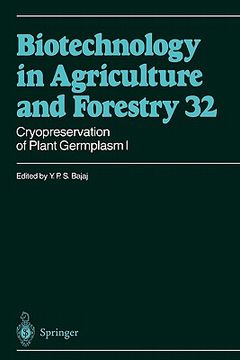Synopsis "cryopreservation of plant germplasm i (in English)"
The germ plasm of numerous plant species, especially those of forest trees, some agricultural crops, and medicinal plants, is endangered and threatened with extinction. This depletion of germplasm pools and the shrinkage of naturally occurring genetic resources have caused international concern. Conventionally, the germplasm of plants is conserved through seeds, tubers, roots, corms, rhizomes, bulbs, cuttings, etc. However, the germ plasm of a number of trees and plantation crops (such as coconut, cocao, coffee, oil palm, rubber, mango, horse chestnut, etc. ) cannot be preserved since their seed are short-lived (recalcitrant). Likewise, germplasm of vegetatively propagated crops (such as potato and cassava) cannot be stored on a long- term basis and has to be grown and multiplied periodically in nurseries and fields. The plants are thus exposed to unpredictable weather conditions and diseases, with the result that instances are known where entire genetic stocks are lost. Therefore, unconventional methods are being developed for the storage and international exchange of germplasm. For this purpose in vitro cultures have been employed, but they can only enable short-to medium- term preservation; moreover, cell cultures upon repeated subculture undergo genetic erosion. In view of the recent developments in the in vitro induction of genetic variability through somaclonal variation, somatic hybridization, recombinant DNA technology, etc., new methods need to be employed for the storage of desirable cultures. In this regard freeze preservation of cells in liquid nitrogen (-196 0q, like that of semen, enables long-term storage, theoretically, for an indefinite period of time.

